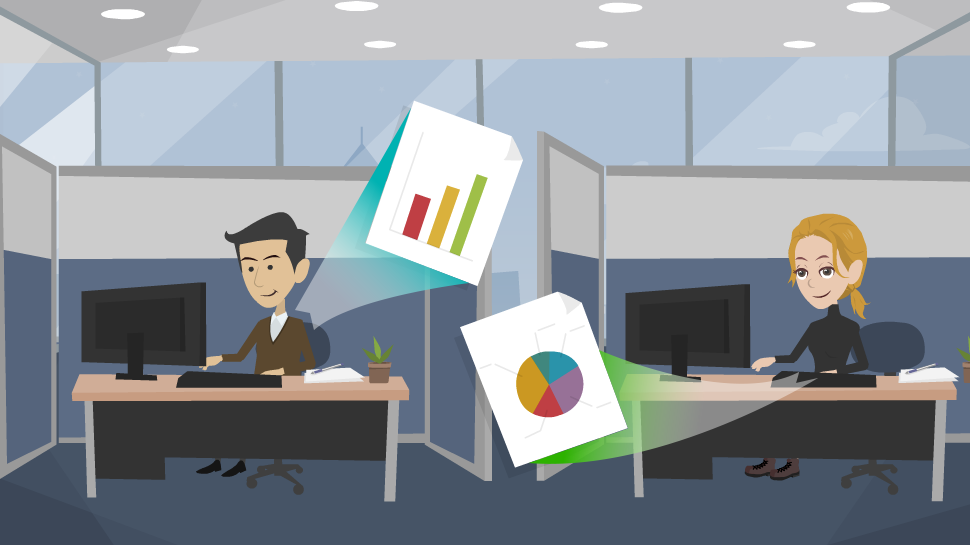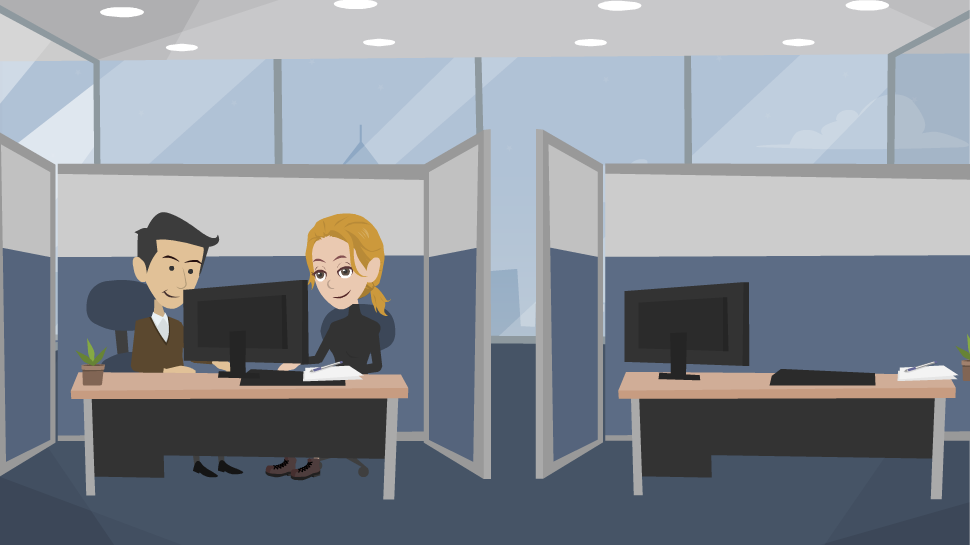When it comes to collaboration, passing documents back and forth can be horribly inefficient and break up the flow of creative energy. This post is about a way of collaborating that increases productivity, keeps you in the flow, and delivers the product sooner.
Levels of Collaboration
At Accent Interactive, we’ve found there are several levels of working together. Let’s use the example of writing, but the principle applies to other creative work as well.
- Level 1: Sounding board
I have my project and you have yours. We work independently and only interact when we want feedback from each other. Then it’s back to work on our own. - Level 2: Designated roles
We both work on the same project but do most of the creating independently. I do my part and you do yours. We may have distinct roles such as writer and editor. This lets us focus on our individual area of strength. Our time together is used for brainstorming and feedback on how our individual work is moving the project forward. - Level 3: Co-Creating
We co-create by passing the work back and forth. In this level we share the same role, such as co-writers. I write some; then you write some. Often the work takes on a voice that combines the personality of each contributor. - Level 4: Co-Active Creativity
We co-create in real time, often to the extent that the lines between writing and editing are blurred. Roles are often fluidly interchanged. We both write together at the same time on a shared document.
The Typical Way
Usually people collaborate at level 2 or 3.

Here’s a common process:
- Come together to brainstorm, shape the concept, launch a direction
- Work individually on content development
- Come together for feedback, testing the idea
- Work individually on refinement
- Come together for final polishing
Certainly there are advantages to this method:
- Freedom
You can work alone without distractions from your line of thought. - Flexibility
You can set your own schedule and work when you are ready, not having to wait for someone else. - Feedback-readiness
You only share your work when the draft is fairly complete and you’re ready for input from others.
But there are also disadvantages:
- Inefficiency
You might have to wait a long time to get feedback. You can also waste time going in the wrong direction. - Getting stuck
You know the feeling when you have an idea but just can’t get it out? It’s often not enough to have time and energy to work on writing—it’s also helpful to have prompts, encouragement, and feedback as you shape ideas. For example, you can have a great brainstorming session on Tuesday. But once you sit down to write on Friday, the ideas don’t flow because of the lapse of time and change of mindset.
Co-Active Creativity

At this level of collaboration you actually share a page or screen and both write at the same time. It might be messy. But working simultaneously is a sure way to kick the creative process into high gear. With practice, you’ll discover these advantages:
- Jumpstarts content development
Often subject matters experts and business owners hesitate to hire third party writers, assuming they wouldn’t know what to write about. Attempts to interview them or give them homework might not succeed. But this method provides an instant way for people to move ideas from abstract thoughts to concrete words. - Faster results
Instead of using the initial time together to just discuss ideas, ask questions, or take notes, you’re actually writing a draft. This puts you closer to the final product more quickly. It’s counter-intuitive because you have to slow down and coordinate your efforts in the beginning. But it saves time in the future. - Less wasted time
When stakeholders work together from the start, it’s evident sooner if the idea will work or not. If not, you can kill it early, make adjustments, and move on to the next idea. - Smoother workflow
Writing in real time takes the waiting for feedback out of the process. You can avoid the delays and inefficiencies that come with the typical back-and-forth review process. - Effective with remote workers
When you share a screen or a Google doc, it makes you feel like you are really working together. It can be easier to focus on the task at hand when you’re limited to just hearing your colleague’s voice and seeing their work on the screen. - Feels great
This level of collaboration gives a real sense of progress and camaraderie. It’s fun to work together and see the project develop.
This level 4 collaboration can be especially helpful at the beginning and end of the creative process. You can co-write at the beginning to get the ideas out. And you can co-edit at the end to polish the work together.
Tips
Co-Active Creativity can be challenging, so if you’re ready to try this elevated level of collaboration, keep these tips in mind:
- Start with something small.
Working together on this level can be a stretch, especially for people who don’t process quickly or externally. Many writers work best letting things stew until something useful bubbles up to the surface. Like any skill, this takes time and energy to develop proficiency. - Try it with a coworker you trust.
Writing together takes vulnerability, so find a colleague you feel comfortable with already. We all have bad ideas and good ideas. Effective co-writing means we have to trust one another and share ideas spontaneously. - Focus on generating content.
Establish up front that the goal is not to generate polished content but to get ideas on the page. More is better. You can always edit later (individually or together). - Be OK with messiness.
When you’re both focused on getting content on the page, it can be messy. Don’t worry about getting it right or imposing a structure. Just get something good started. Evaluation comes later. And let the content you generate speak to the structure it needs. - Switch roles often.
If you’re in the same room sharing a computer, then don’t stay at the keyboard very long before letting your collaborator in on the fun. Co-writing is not about one person talking and someone else writing down what they say. It’s about both contributing as you go. - Evaluate the process.
Discuss how the collaboration is or isn’t working. See how the process might need to adjust to your work styles. For example, observe if anyone tends to dominate the process or is reluctant to participate. The goal of collaboration is to encourage mutual contribution. - Decide the next action.
Once you have content on a page, what will happen next? Is it ready for feedback or publishing?
More Than a Tag Team
If you’re tired of throwing drafts back and forth among your colleagues, then try sitting beside them and working on the same screen. This level of collaboration might be what you need to get that creative project going.
To Learn More
- The concept of pair writing comes from pair programming.
- Create Better Content By Working in Pairs by Bjørn Bergslien